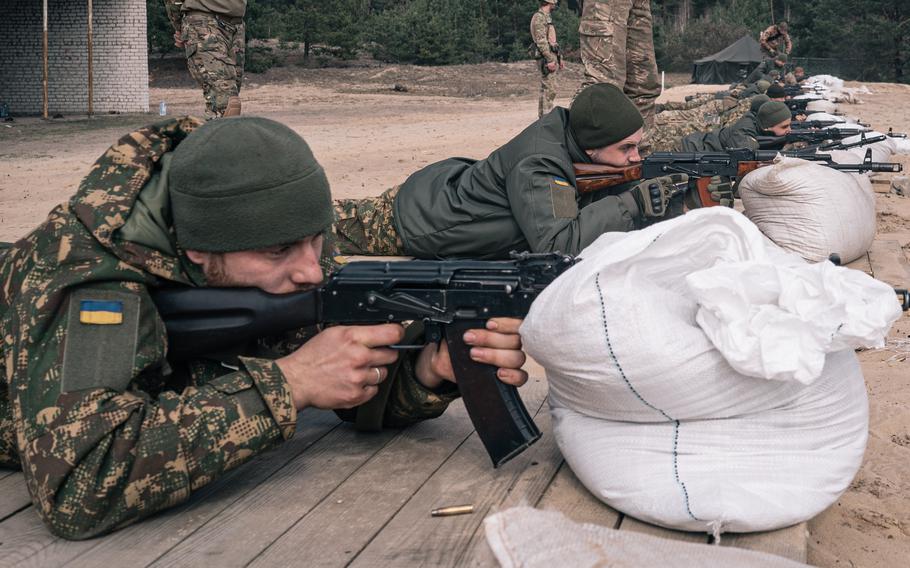Europe
US lifts weapons ban on Ukrainian military unit
The Washington Post June 11, 2024

Ukrainian military recruits shoot on a firing range at an Azov Brigade training camp outside Kyiv in March 2023. (Alice Martins for The Washington Post)
The Biden administration will allow a Ukrainian military unit with a checkered past to use U.S. weaponry, the State Department said Monday, lifting a ban imposed years ago amid concerns in Washington about the group’s origins.
The Azov Brigade, known for its tenacious but ultimately unsuccessful defense of the Azovstal steel mill in Mariupol early in Russia’s full-scale invasion of Ukraine, is regarded as a particularly effective fighting force. But it was barred about a decade ago from using American arms because U.S. officials determined that some of its founders espoused racist, xenophobic and ultranationalist views, and United Nations human rights officials accused the group of humanitarian violations.
Now the brigade, a one-time volunteer militia absorbed into the Ukrainian National Guard in 2015, will have access to the same U.S. military assistance as any other unit. The policy shift was disclosed as Kyiv starts the summer fighting season and faces down a Russian military that has intensified its pressure on objectives in eastern Ukraine and the country’s energy infrastructure.
“After thorough review, Ukraine’s 12th Special Forces Azov Brigade passed Leahy vetting as carried out by the U.S. Department of State,” the agency said in a statement, referring to the “Leahy Law” that prevents U.S. military assistance from going to foreign units credibly found to have committed major human rights violations. It is named for former senator Patrick J. Leahy (D-Vt.), who wrote the legislation.
The State Department found “no evidence” of such violations, its statement says.
A State Department spokesman declined to say when the ban was lifted and whether U.S. weaponry had already reached Azov personnel. Neither Azov leadership nor the Ukrainian government responded to requests for comment.
Canceling the ban had been a top priority for Ukrainian officials, who say the brigade could have been more effective during its defense of Azovstal in 2022 if it had access to U.S. equipment. Members of the brigade also have been barred from attending training organized by the U.S. military.
Russian President Vladimir Putin has long cited racist and ultranationalist elements of the Azov Battalion as an element of his accusation that Ukrainian fighters and their rulers in Kyiv are neo-Nazis. The shift in U.S. policy is likely to reignite those Russian critiques.
The brigade’s leadership says that it long ago shed those associations and that its commanders have fully turned over since that era.
Within Ukraine, the brigade’s name has become synonymous with the country’s last stand in the besieged city of Mariupol. Ukraine eventually ordered the remaining troops in the steel factory to surrender to Russian forces to survive. As of early May, more than 900 remained in captivity.
The plight of the remaining Azov prisoners has captured the hearts and minds of Ukrainians, and “Free Azov” has become a common rallying cry in protests in Kyiv.
Azov seized on its new status as a brigade last year and launched an intensive recruitment campaign across the country that brought in more than 5,000 new troops in around two months. Survivors from Azovstal were among those interviewing and training the recruits, who were grilled on their motivations, background and physical fitness before selection.
Separate from the State Department’s vetting process, U.S. appropriations laws have long prohibited the Azov Battalion from receiving American aid. U.S. officials say that because the Azov Battalion of 2014 is distinct structurally from the brigade that is now a part of the National Guard, those restrictions do not apply.
O’Grady reported from Kyiv.